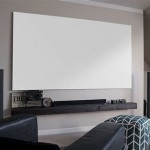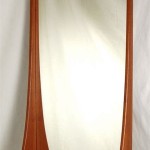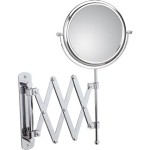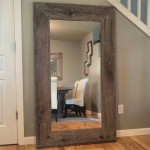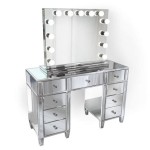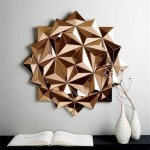How High To Hang Bathroom Mirrors
Hanging a bathroom mirror correctly is crucial for both functionality and aesthetics. An improperly placed mirror can make a bathroom feel awkward and unusable. Several factors influence the ideal height, including the height of the users, the size of the mirror, and the presence of vanities or other fixtures. Understanding these factors allows for a comfortable and visually appealing bathroom experience.
Consider the Users' Height
The primary consideration when determining mirror height is the height of the individuals who will be using it. A mirror should accommodate everyone in the household, from the shortest to the tallest. While a precise measurement for every individual isn't practical, aiming for a height that works for the average height within the household is a good starting point. This generally means the mirror's center should be at eye level for the average user.
In households with significant height differences, a slightly larger mirror can be beneficial. This allows individuals of varying heights to use the mirror comfortably without needing to stoop or strain. Consider the highest and lowest eye levels in the household and aim for a mirror height that encompasses as much of that range as possible.
Factor in the Mirror Size
The size of the mirror also plays a significant role in determining the appropriate hanging height. A larger mirror naturally requires a wider range of adjustability to accommodate different user heights. With larger mirrors, the bottom edge can be hung slightly lower than with smaller mirrors, as the upper portion will still be accessible to taller individuals. Conversely, smaller mirrors require more precise placement to ensure usability for all.
Measure the mirror's dimensions before hanging to visualize how it will fit on the wall. This can help determine the optimal placement for the center of the mirror, ensuring it aligns with the average eye level in the household. It's useful to mark the anticipated top and bottom edges on the wall with painter's tape before making any permanent fixture holes.
Account for Vanities and Lighting
The presence of a vanity significantly influences mirror placement. The mirror should be positioned above the backsplash of the vanity, leaving a sufficient gap between them. Typically, a gap of two to four inches is recommended, although this can be adjusted based on individual preference and the specific design of the vanity. The mirror's bottom edge should not touch the backsplash or any countertop fixtures.
Lighting fixtures also need to be considered. Wall sconces or overhead lighting should illuminate the face of the user without creating glare or shadows in the mirror. The positioning of the mirror should complement the lighting, allowing for optimal illumination for grooming tasks. Ensure the mirror doesn't obstruct the light source or create unwanted reflections.
Standard Recommendations and Adjustments
While individual needs vary, a common recommendation is to place the center of the mirror approximately 58 to 65 inches from the floor. This range generally suits individuals of average height. However, this is a guideline and should be adjusted based on the specific circumstances of the bathroom and its users. Children's bathrooms, for instance, will require a lower mirror placement.
Before making any permanent fixtures, it’s always advisable to test the placement. Use painter's tape to outline the mirror's proposed position on the wall. Have members of the household stand in front of the taped outline to assess its suitability. This allows for adjustments to be made before drilling holes, ensuring a comfortable and practical outcome.
Accessibility Considerations
In bathrooms designed for accessibility, adherence to specific guidelines may be necessary. Regulations often dictate specific heights and clearances for mirrors and other fixtures to accommodate individuals with disabilities. Consult relevant accessibility guidelines to ensure compliance and create a truly inclusive bathroom environment. This may involve lower mirror placement or the inclusion of tilting mirrors for users in wheelchairs.
Consider the specific needs of users with mobility limitations. A lower mirror placement may be required for individuals using wheelchairs. Tilting mirrors can also be beneficial in providing flexibility and accommodating a wider range of heights and postures. Careful planning and adherence to accessibility standards are crucial for creating a functional and inclusive bathroom.

How To Hang A Wash Basin Mirror Step By Guide Accent

Bathroom Mirror Size Calculator

The Right Height For Your Bathroom Sinks Mirrors And More

How High To Hang A Bathroom Mirror Homemate Mirrors

Guide To Hanging Bathroom Vanity Lighting And Mirrors Liven Design

How To Pick And Hang The Perfect Bathroom Mirror Roomhints

How To Pick And Hang The Perfect Bathroom Mirror Roomhints

How High To Place Your Bathroom Fixtures Inspired Style

How High To Hang A Vanity Mirror Sparrow Stoll

The Right Height For Your Bathroom Sinks Mirrors And More

